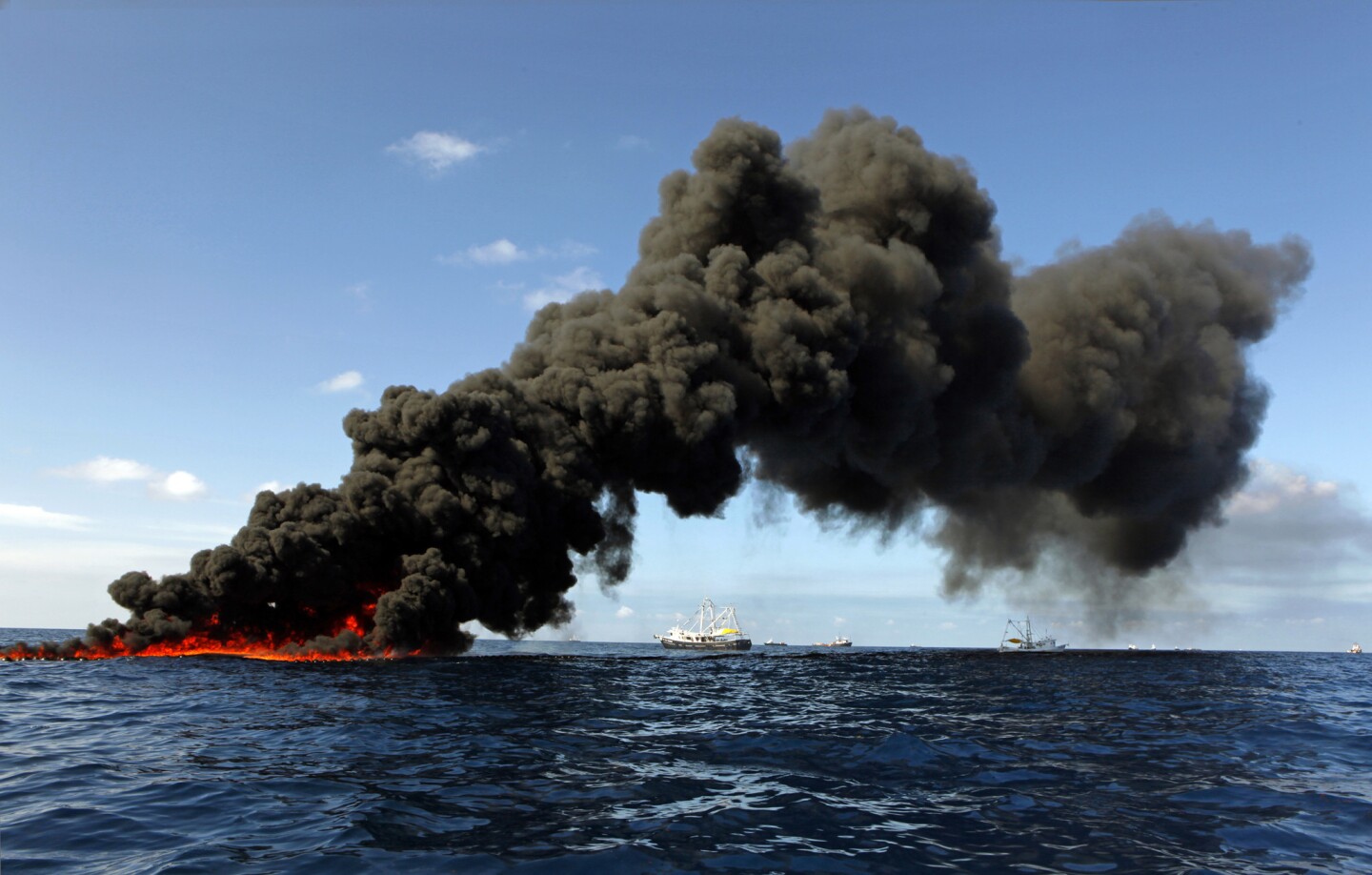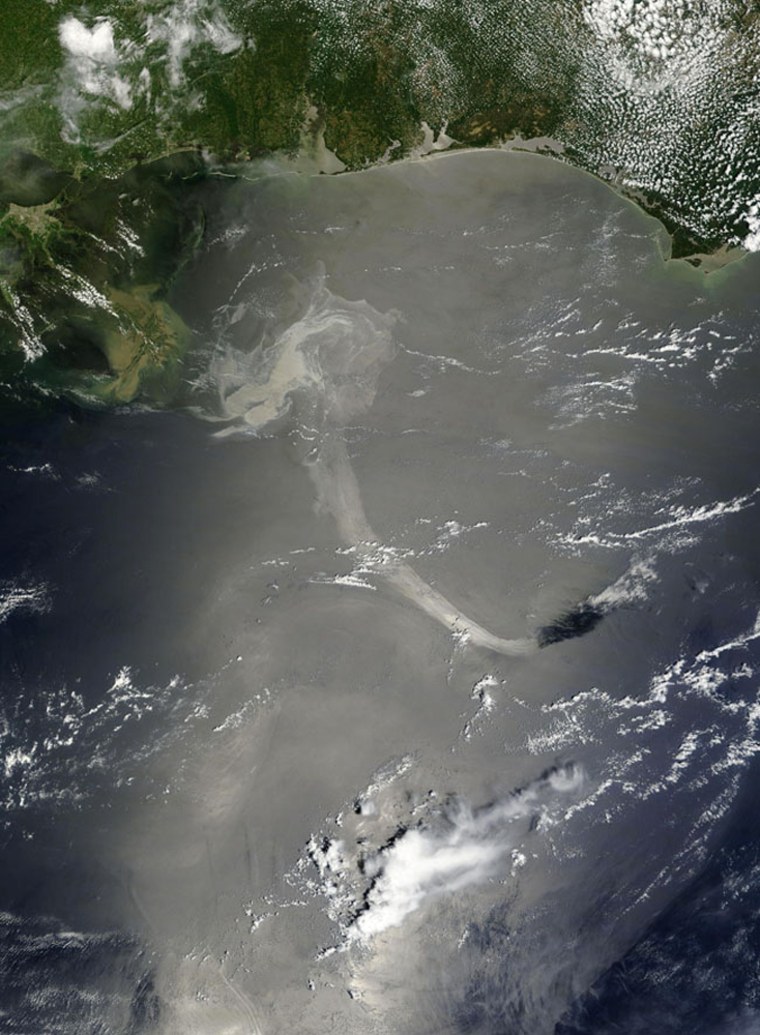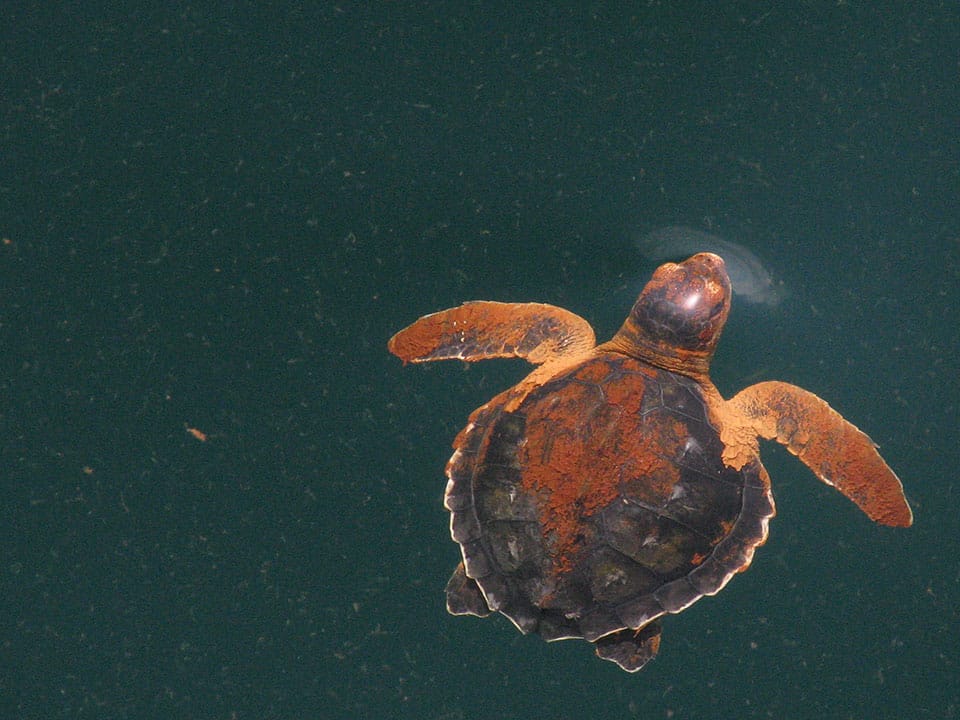Ending the Use of Oil and Preventing Oil Spills
Written by Erin Yoo
How does the world respond to an existential threat? Historically, governments and leaders have come together to sign promise treaties to prevent these threats. For example, the Treaty on the Non-Proliferation of Nuclear Weapons was drafted and signed by the five countries with the largest nuclear arsenals to prevent the possibility of nuclear annihilation. By signing the treaty, these countries promised to give up their nuclear weapons and end the production of future nuclear arms (Makower, 2020). More recently, to combat climate change and crisis, organizations and scholars have drafted the Fossil Fuel Non-Proliferation Treaty, introduced in September of last year (Makower, 2020). The components of this treaty was heavily shaped by the Nuclear Weapons treaty, containing many similar goals regarding non-proliferation (“ending all new exploration and production [of coal, oil, and gas]”); global disarmament (“phasing-out existing stockpiles and production of fossil fuels”); and a just transition (“fast-tracking real solutions and a just transition for every worker, community and country”) (THE FOSSIL FUEL, n.d.). Due to the success of the Nuclear Weapons treaty in terms of preventing nuclear destruction, the Fossil Fuel Non-Proliferation Treaty also has the tools to help prevent climate destruction. While preventing a climate crisis will involve multiple components, this one specifically addresses the devastating environmental impacts of fossil fuel emissions into the atmosphere, such as oil spills, which are a result of the lucrative oil industry.
The Oil Industry
Crude oil, oil at its purest form, is essentially the liquid remnants of dead plants and animals found in rock pores underground and under the sea floor (Oil spills, updated 2020). Humans started taking advantage of this resource due to its versatility in creating useful petroleum—oil—products such as gasoline, asphalt, plastic, soaps, paints, medicine, war weapons, and more. Of course, oil is also used as an energy resource, lubricant, and fuel for vehicles and lighting (Oil spills, updated 2020; Rafferty, n.d.). Even more, liquid petroleum is easily transported, making it an even more appealing resource. After crude oil is extracted from the earth, such as through fracking or hydraulic fracturing, it is transported through pipes, ships, trucks, and or trains to refineries where it is processed into various products (Oil spills, updated 2020).
Figure 1

Image of an oil extraction plant.
Source: [Recruiter.com]
Oil Spills
However, there is a steep price that comes with the success of the oil industry, as there always is with human exploitation of the environment. One of the most important devastating effects of oil extraction and use is leakage and spills. Although many people envision oil spills as something like the horrifying wreckage of the 2010 BP Deepwater Horizon oil spill where 134 million gallons of oil was spilled into the Gulf of Mexico, most oil spills are smaller and far more common than is represented in the media (Oil spills, updated 2020; Rafferty, n.d.). In fact, thousands of oil spills happen annually but most are not as massive as the BP spill seen in Figures 2 and 3.
Figure 2

Image of the BP Deepwater Horizon oil spill in the Gulf of Mexico, nearly a decade ago (2010).
Source: [LA Times]
Figure 3

Image of the BP Deepwater Horizon oil spill from space. The dark blot in the center right and gray tail curving left shows the oil slick.
Source: [NBC News]
There are many ways that oil can leak into the ocean in smaller amounts: For example, it can happen when ships refuel or as a result of old, damaged equipment (Oil spills, updated 2020; Rafferty, n.d.). Though these spills are not as destructive individually, they add up to have extremely harmful effects, particularly in ecosystems like beaches, mangroves, and wetlands which are relatively sensitive environments (Oil spills, updated 2020). In other words, small, daily leaks should not be underestimated. Larger spills can occur when pipes break, big oil tankers sink, or extraction procedures go wrong, and their consequences are much more impactful on an individual level. The effects of large oil spills, such as the 1991 Persian Gulf War oil spill which was the largest oil spill in history releasing 380-520 million gallons into the water, can last for decades after the initial spill (Rafferty, n.d.).
Oil spills affect the environment through fouling, or oiling, and oil toxicity (Oil spills, updated 2020). Fouling refers to how oil physically damages wildlife and impacts their survival. For example, oil can coat a bird’s wings, preventing it from flying and damage fur sea otter fur, making them more vulnerable to hypothermia and cold temperatures (NOAA, 2021; Oil spills, updated 2020). Oil toxicity refers to the toxic chemical effects of oil spills, resulting in health problems like heart damage, stunted growth, immune system damage, and death in marine animals (Oil spills, updated 2020). Additionally, young sea turtles can become trapped in the oil or ingest the oil while mistaking it for food. Dolphins and whales may inhale oil and damage their lungs, immune system, and reproduction while birds and other animals can also consume oil as they try to clean themselves (NOAA, 2021). Furthermore, although fish, shellfish, and corals are usually not immediately exposed to surface-level oil, they will encounter it if the oil reaches deeper areas of the water column. Oil will result in reduced growth, enlarged livers, fin erosion, and more in adult fishes as well as other health problems for shellfish, making them unsafe to eat for humans (NOAA, 2021).
Figure 4

Image of an oil-coated turtle.
Source: [NOAA]
When oil spills happen in U.S. waters specifically, the U.S. Coast Guard is typically responsible for cleaning it up (Oil spills, updated 2020). NOAA (National Oceanic and Atmospheric Administration) is responsible for the restoration aspect of revitalizing the surrounding environment and providing scientific information to assist in the best ways to move forward after an oil spill. Prevention methods have also been developed from using floating barriers that physically keep oil away from vulnerable areas like beaches, called booms; to devices that allow boats to “skim” oil on surface-water, called skimmers; to burning the oil; and finally to releasing chemical agents that break up oil slicks (Oil spills, updated 2020). At the same time, it is crucial to understand that 100% of spilled oil can never be removed. Additionally, experts have sometimes implemented cleanup operations that did more harm than good, such as during the cleanup of the 1989 Exxon Valdez oil spill, so cleanup measures should be carefully evaluated and researched (Oil spills, updated 2020).
Modern Day: The SAFER Tanker in the Red Sea
Even now with the common knowledge of the danger of oil spills, an abandoned oil tanker holding 1.1 million barrels of oil currently sits right by the coast of Yemen in the Red Sea (FSO SAFER, updated 2021; Stony Brook University, 2020). The Yemen-owned tanker has been inactive since 2015, causing much concern to scientists who worry of decaying equipment and thus oil leakage (Stony Brook University, 2020). In fact, a team of scientists at Stony Brook University released a paper in Frontiers in Marine Science in December 2020 calling for the tanker to be addressed and oil removed. What makes this case even more dire is the unique, biodiverse wildlife in and around the Red Sea. Most coral reefs today cannot survive in the hot ocean waters, but Red Sea coral reefs are known to withstand the warmer temperatures and continue to provide important habitats for fish and predators (Stony Brook University, 2020). Additionally, the Red Sea consists of many vulnerable habitats including mangroves and bird habitats (FSO SAFER, updated 2021). Even more, oil spots were seen by the tanker in May 2020, so it is possible that some oil could already have seeped into the sea. An oil spill of this magnitude would wreak havoc on the beautiful, rich ecosystems of the Red Sea.
In order to address this problem and potentially explosive catastrophe, the United Nations requested in November 2020 for a team to inspect the Safer, but this has not happened yet (Stony Brook University, 2020). The delay can be attributed to the Yemen conflict and COVID-19 pandemic but it is still important that this be addressed as quickly as possible. If Safer does leak oil into the Red Sea, experts predict that the spill would be a “major environmental disaster” (FSO SAFER, updated 2021). On top of this, surrounding countries Saudi Arabia, Djibouti, and Eritrea may be affected, not just Yemen, whose people already rely heavily on humanitarian aid. Fishing communities would lose profits and critical ports would be interrupted, among other impacts (FSO SAFER, updated 2021).
Conclusion: So, Where Do We Go From Here?
One significant piece of legislation addressing oil spills in the United States is the Oil Pollution Act, signed in August 1990 after the Exxon Valdez oil spill (Oil Pollution Act, n.d.). The OPA helped regulate the handling of oil spills and expand federal investment into ecosystem cleanup and recovery. Additionally, it established consequences for organizations that were responsible for oil spills and for those that did not report spills to the government (Oil Pollution Act, n.d.). However, the OPA, nor the famous Paris Agreement, does not address the larger picture of why oil spills happen: fossil fuel production itself. It is important that fossil fuel production and the drivers of it are targeted, not just the results of the process, in order to address the climate crisis. This is where the Fossil Fuel Non-Proliferation Treaty, mentioned previously, comes in.
Market projections show that oil and coal industries are not stopping the exploitation of nonrenewable resources, even as the growth of these sectors is slowing down (Makower, 2020). Moreover, their fortunes are decreasing. According to studies from the International Energy Agency, U.S. Energy Information Administration, and the Organization of the Petroleum Exporting Countries, 600,000 to 2.2 million fewer barrels will be needed per day to meet the global demand for oil (Makower, 2020). On the other hand, a different report, this one from BP, found that oil demand may have actually peaked in 2019 and the market may never bounce back from the damage of COVID since less travel and economic activity means lower demand for energy (Makower, 2020). Similarly, the demand for coal is decreasing with the increasingly frequent closures of mines and many industry organizations going bankrupt. China—the largest coal consumer in the world—even stated that it would become carbon-neutral in forty years (Makower, 2020).
Thus, the slowly declining demand for fossil fuels yet continued expansion of fossil fuel companies show that these operations have to be restricted. In order to reduce carbon emissions and avoid reaching the 1.5℃ threshold outlined by the Paris Agreement, fossil fuel production should also be addressed (Makower, 2020). This can be done through the non-proliferation treaty. So far, hundreds of organizations and scientists, tens of thousands of individuals, and five cities—with Vancouver being the first—have endorsed the treaty (THE FOSSIL FUEL, n.d.). Other related planned projects include the development of the Global Registry of Fossil Fuels, a public database containing information of reserves and production, and the creation of an Oil Exit List listing the organizations leaving the fossil fuel industry (Makower, 2020). All in all, there are many more steps to take to ensure environmental and human health, but hopefully, this is a start to establishing a cleaner, more just world.
References and Sources
THE FOSSIL FUEL NON-PROLIFERATION TREATY. (n.d.). Fossilfueltreaty.org. Retrieved from https://fossilfueltreaty.org/
FSO SAFER oil spill risk. (updated 2021, January). International Maritime Organization. https://www.imo.org/en/MediaCentre/HotTopics/Pages/FSO-SAFER-oil-spill-risk.aspx
Makower, Joel. (2020, October 19). A new power play: The Fossil Fuel Non-Proliferation Treaty. GreenBiz. https://www.greenbiz.com/article/new-power-play-fossil-fuel-non-proliferation-treaty?utm_source=newsletter&utm_medium=email&utm_campaign=greenbuzz&utm_content=2020-10-19&mkt_tok=eyJpIjoiTVRCa09EbGhNV1ZpT1RFNCIsInQiOiJvdDlUWnJiV3AyUW5sM2JFY3VObXJlN1wvNVh4U2NtOWxhYmw0Zjhnekk3RkliREdLUUhpRktUdlYraVhnbk1XYVhjRnRpOHB6dlNPaHByZ3JEM3NFZFVtQlo5QUh1ejFHSlVcLzljRDdwbzhFZG00c1NYZ3dudThnUDBQR2JJZWF1In0%3D
NOAA. (2021, February 26). How does oil impact marine life? National Oceanic and Atmospheric Administration (NOAA). https://oceanservice.noaa.gov/facts/oilimpacts.html
Oil Pollution Act Overview. (n.d.). United States Environmental Protection Agency. Retrieved from https://archive.epa.gov/emergencies/content/lawsregs/web/html/opaover.html
Oil spills. (updated 2020, August). National Oceanic and Atmospheric Administration (NOAA). Retrieved from https://www.noaa.gov/education/resource-collections/ocean-coasts/oil-spills
Rafferty, John P. (n.d.). 9 of the Biggest Oil Spills in History. Britannica. https://www.britannica.com/list/9-of-the-biggest-oil-spills-in-history
Stony Brook University. (2020, December 15). Scientists warn of likely massive oil spill endangering the Red Sea, region’s health: Abandoned tanker has 4 times the amount of oil as the Exxon Valdez. ScienceDaily. Retrieved April 17, 2021 from www.sciencedaily.com/releases/2020/12/201215082101.htm